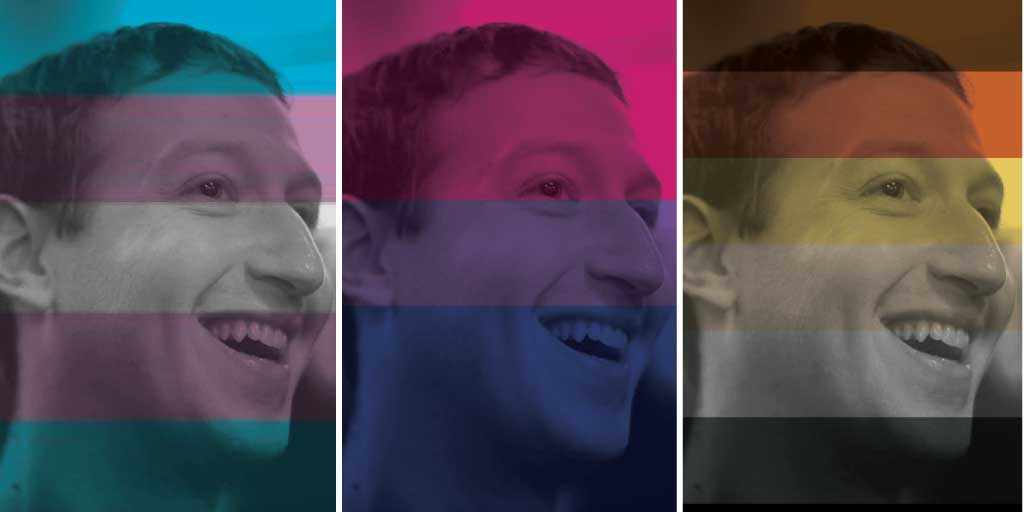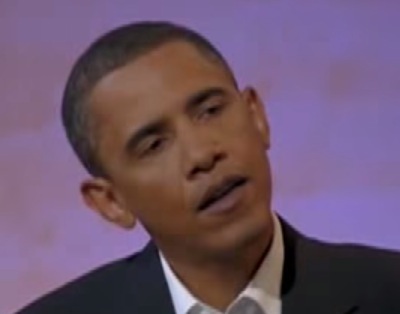The rainbow is no stranger to gay pride celebrations. It is as natural to the LGBTQ rights movement as the pink triangle, as inevitable a symbol to be seen at parades, festivals and rallies as red T-shirts and black armbands.
But when the rainbow came in social media form, it was previously associated with self-identified LGBTQ individuals and organizations, more likely to be seen in the gay districts and liberal enclaves of big cities or universities.
The rainbow has come to the mainstream, to corporations, to LGBTQ allies, and, well, everywhere.
Within hours of the US Supreme Court’s landmark decision granting same-sex couples the right to marry nationwide, Facebook unveiled a previously internal-only tool that allowed users to apply a rainbow filter over their profile picture. The filter, inspired by the pride flag hanging over Facebook’s campus to mark Pride Month, had been developed by two Facebook interns over a 72-hour hackathon. In the following weekend, more than 26 million Facebook users applied the filter to their profile picture.
I’ve not seen any data on whether those users were LGBTQ or were allies, whether they were showing pride in the Supreme Court decision or showing support for the myriad couples now able to get married, or all of the above. I know that personally, in my Facebook feed, most of the users with a rainbow profile picture were indeed straight, cisgender allies, making the phenomenon that much more noteworthy and that much more overwhelming.
Much has already been written about the rainbow-fied profile pictures. Some have speculated that the tool was another experiment to gather information on its users. Others have lamented that changing one’s profile picture has zero effect on anything and amounts to nothing more than self-righteous attaboy backslapping. And gay reporter/writer Peter Moskowitz said the use of rainbow profile pictures was an appropriation that cheapened the struggles of the gay rights movement. As Moskowitz wrote:
I’ve earned the right to claim pride through years of internal strife over my sexuality. Others have died in the name of gay pride. More still have been jailed, have been disowned by their families, and have sued their state governments for it. Gay pride is not something you can claim by waving a flag. The rainbow symbol is easy to co-opt, but the experience it represents is not.
That’s why it wasn’t comforting to see hundreds of my Facebook friends’ profile pictures draped in rainbows. It didn’t feel like they were understanding my struggle; it felt like they were cheapening it, celebrating a victory they had no part in winning.
Some of the rainbow-colored faces were people I would never talk to about being gay – a relative with conservative politics, high school buddies I didn’t come out to because I feared losing their friendships. They weren’t necessarily homophobic, but they weren’t great allies either. They didn’t march during pride celebrations; they didn’t participate in the “day of silence”; they didn’t even bother to inquire about my life. If they were true allies to me or the LGBT community, where were they before Friday?
Moskowitz’s Washington Post piece has been widely circulated, and resonated with many in the LGBTQ community. I didn’t share Moskowitz’s sentiments, though I did feel more than a twinge of sadness.
I thought of a gay friend I had who passed away a few years ago. He died of natural causes, but had attempted suicide years earlier, when he had been a lonely, alienated high school student. He felt isolated and alone at his high school because he was gay. With my late friend in mind, I did not see the profile pictures as an appropriation or as an attempt to jump on a bandwagon. Instead, I saw them as the digital equivalent of the “safe space” stickers I used to see around campus when I was in college. I saw the profile pictures as a way for straight, cisgender people to indicate they were supportive of their friends.
That said, however cynical Moskowitz’s take might seem, he does invite us to look at the history of the rainbow flag and other LGBTQ banners whose storied background many of us didn’t understand before the flood of profile pictures a few weeks ago.

Gilbert Baker first created the Rainbow Flag after Harvey Milk asked Baker to make a flag for a march he was organizing. The rainbow seemed a natural symbol, as it had been associated with the gay rights movement ever since the Stonewall Riots in 1969, which coincided with the week of Judy Garland’s death. The first flag, made in 1978, had eight colors:
hot pink, red, orange, yellow, green, turquoise, indigo/blue and violet — but it gradually lost its stripes until it became the six-color version most commonly used today. Each of the colors has its own significance, he says: hot pink for sex, red for life, orange for healing, yellow for sunlight, green for nature, turquoise for art, indigo for harmony and violet for spirit.
The flag lost its hot pink stripe when Baker approached the Paramount Flag Company to begin mass producing them – the hot pink fabric was too rare and expensive to include. The flag lost its indigo stripe before the 1979 Gay Freedom Day Parade. The committee organizing the parade wanted to split the flag in half and fly each part from the light poles along both sides of Market Street, so it became a six-striped flag.
The rainbow flag is the most commonly known flag associated with LGBTQ issues, but certainly isn’t the only one. It’s not even the only one that you can overlay on your profile picture.

Michael Page created the bisexual pride flag (above) in 1998 to represent bisexual people at Pride rallies. Page’s reasoning for his design:
The pink color represents sexual attraction to the same sex only (gay and lesbian), the blue represents sexual attraction to the opposite sex only (straight) and the resultant overlap color purple represents sexual attraction to both sexes (bi). The key to understanding the symbolism in the Bi Pride Flag is to know that the purple pixels of color blend unnoticeably into both the pink and blue, just as in the ‘real world’ where bi people blend unnoticeably into both the gay/lesbian and straight communities.
You can even overlay the bisexual pride flag onto your Facebook profile.

Monica Helms, a transgender woman, a created the transgender pride flag (above) in 1999. The reasoning for her design:
The stripes at the top and bottom are light blue, the traditional color for baby boys. The stripes next to them are pink, the traditional color for baby girls. The stripe in the middle is white, for those who are intersex, transitioning or consider themselves having a neutral or undefined gender. The pattern is such that no matter which way you fly it, it is always correct, signifying us finding correctness in our lives.
You can even overlay the transgender pride flag onto your Facebook profile.

The International Bear Brotherhood Flag (above) was introduced by Craig Byrnes in early 1996 to represent bears, “a term for rugged gay men who often exhibit body hair and can be heavyset (though this isn’t always the case).” A similar but different flag had been designed by Steve Heyl and Jim Maxwell in early 1992.
Of course, these are but a few of the flags associated with communities within the LGBTQ movement. There are many other flags.
The rainbow flag, which may or may not have just experienced its “tipping point,” has become the most well-known flag associated with gay rights. If you hadn’t seen it before two weeks ago, you’ve certainly seen it now.

Will the other flags be as ubiquitous?
LGBTQ advocates have long said that same-sex marriage was but one of many issues affecting the community. Transgender issues have gained more visibility in the mainstream press, for a variety of reasons. Laverne Cox was featured on the cover of TIME and Caitlin Jenner appeared on the cover of Vanity Fair. Islan Nettles’s murder and Leelah Acorn’s suicides have highlighted the threats and pressures facing the transgender community, especially transgender women and and transgender women of color.









